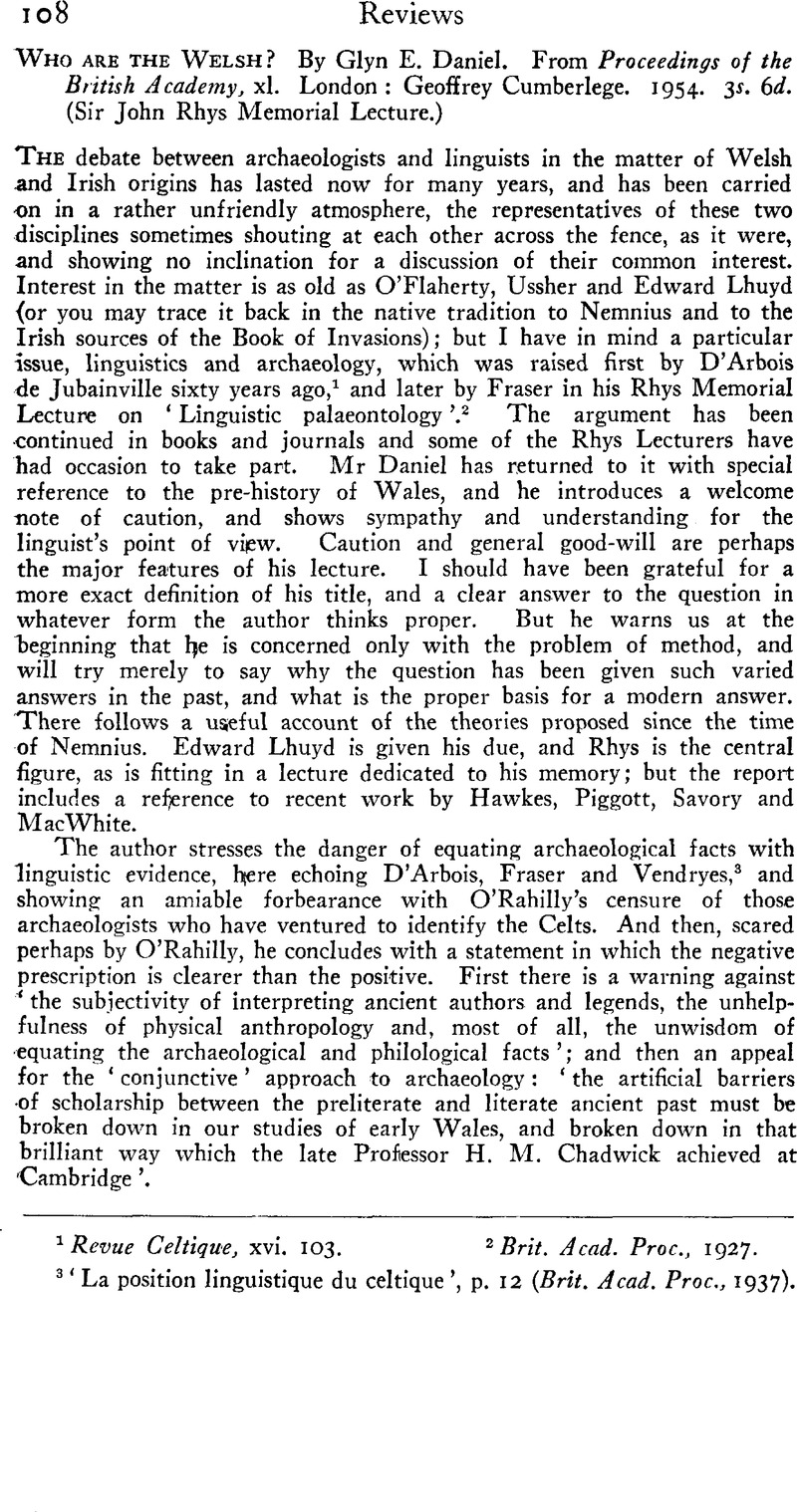No CrossRef data available.
Article contents
Who are the Welsh? By Glyn E. Daniel. From Proceedings of the British Academy, xl. London: Geoffrey Cumberlege. 1954. 3s. 6d. (Sir John Rhys Memorial Lecture.)
Published online by Cambridge University Press: 28 July 2016
Abstract

- Type
- Book Reviews
- Information
- Copyright
- Copyright © Irish Historical Studies Publications Ltd 1956
References
1 Revue Celtique, xvi. 103.
2 Brit. Acad. Proc., 1927.
3 ‘La position linguistique du celtique’, p. 12 (Brit. Acad. Proc., 1937).
4 ‘La premiere apparition des Celtes’, Revue Celtique, xxxviii, 288 Google Scholar. Loth accorded the fullest authority to archaeologists in the matter of Celtic origins. O’Rahilly rejected his argument, Early Irish history and mythology, p. 431.
5 Powell, T.G.E., ‘Celtic origins’, in Journal of the Royal Anthropological Soc., lxxviii (1948). 75 Google Scholar. But Pedersen, a great authority on the linguistic side, would have put the separation of Celtic from Italic early in the second millennium; see ‘Le groupement des dialectes indoeuropéens’, p. 8 (Kgl. Vidensk, Danske. Selskab., Hist-fil. Medd., xi, 3,1925)Google Scholar.
6 MacWhite sets a good example as an archaeologist, ‘Problems of Irish archaeology and Celtic philology’, in Zeitschrift für Celtische Philologie, xxv. 1fGoogle Scholar.
7 Bosch-Gimpera seems to me to present a satisfactory argument in his lecture ‘ Two Celtic waves in Spain ‘, Brit. A cad. Proc., xxvi.
8 Early Irish history and mythology, pp. 419—443.




